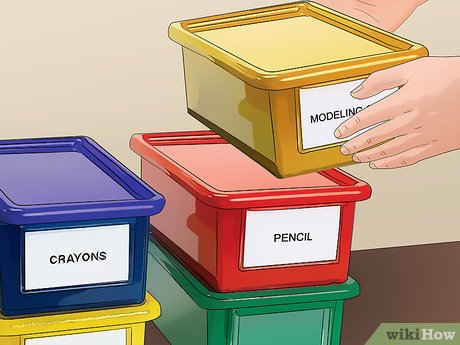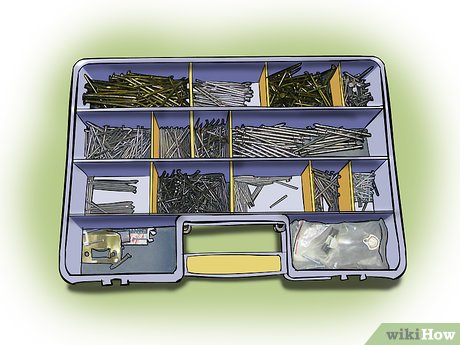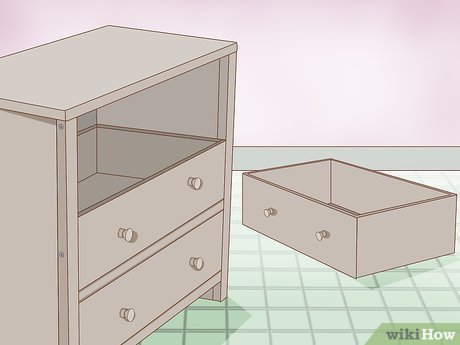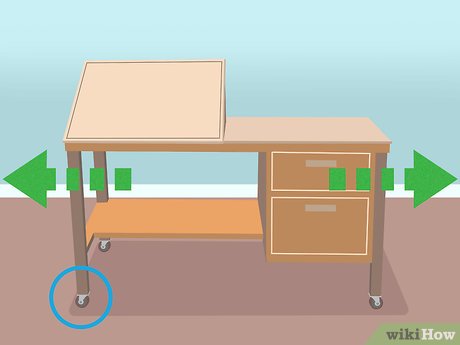For several years, the idea of the STEAM (Science, Technology, Engineering, Art, Math) has been a major topic in education and business, along with the creation of makerspaces. What exactly is a makerspace? It is a space where inventors have the material available to complete a task, using innovation, problem solving, and shared resources.X.
Many schools and libraries would like to include makerspaces in their buildings but are hampered by a lack of room and funds. Fortunately, it is possible to create a space to encourage inventors of all ages and interests. As Thomas Edison once said: “To invent, you need a good imagination and a pile of junk.”X
StepsMethod 1Method 1 of 4:Creating a Homemade Makerspace
1Create a preschool drawing space. Ever notice how children prefer boxes and wrappers to the toys inside them? You don’t have to have a lot of expensive equipment to interest a young child in making things. Here are some ideas that will keep your preschooler engaged:.Use a wall as a drawing area. With contact paper or self-adhesive whiteboard paper (available online or at most craft stores) and dry erase markers, a wall can be a kid-friendly drawing area.If you want to create a permanent drawing area, paint an area accessible to your child with chalkboard or dry erase paint.
2Create a playroom makerspace. An existing playroom can become a makerspace with the addition of a few materials.Include age-appropriate furniture. For a small area, a play table of approximately coffee table height would be the appropriate height for preschool age children. Consider tables with drawers or shelves for storage.Provide storage with easy access. It is nearly impossible to prevent playrooms/makerspaces from getting messy, but providing floor-level baskets and bins will make it easier for your preschool maker to put their things away when they are done using them. You can find storage bins at your local craft store, or office supply store, or online by googling “storage bins.”Provide material for creating things. Reuse items like packing boxes, construction paper, and wrapping paper.Provide material such as crayons, stickers, ribbon, and duct tape for decorating the kids’ creations.Always make sure kids have adequate supervision when they are using the makerspace.
3Create a makerspace for elementary school-age children. Many people associate makerspaces with high-tech equipment like 3D printers, but you can create a low-tech makerspace that holds the kid’s interest and is more appropriate for a first or second grade student.Set up your furniture. Try to find tables with adjustable legs to accommodate children of different ages and heights. If you plan to include power or hand tools, use furniture that is sturdy and you won’t mind being damaged. Yard sales can be a good source.Add plenty of storage space. A rolling storage cart can be bought online for approximately $50.00Find a space that you won’t mind getting messy. A corner of a basement or rec room might work well.Encourage your children to help in the planning. Are they interested in painting? Or sewing? Bring them along when you shop for materials and furniture.
4Create a makerspace for teens and adults. The Maker Movement has a lot in common with the DIY (Do it Yourself) Movement.Gather your tools. EdSurge.com has a list of tools and materials to stock your makerspace, ranging from items from around the house to specialty tech items.XGather your materials. You don’t need to spend a ton of money to obtain material for your projects. You can find items at greatly reduced prices, or even for free.Method 2Method 2 of 4:Creating a Mini Makerspace for School Age Students
1Encourage input from older students. When one charter schoolX decided to create a makerspace for their kindergarten class, they sought input from their seventh and eighth graders for ideas. This provided the opportunity to learn Design Thinking.XGive the students a task to solve. The teachers asked the seventh and eighth graders to repurpose old dressers. After interviewing the kindergartners, they determined how best to do a redesign of the dressers.Teach your students how to use the necessary tools. Some of the dressers were falling apart, and the students needed to use hammer and nails, drills, and circular saws to make the necessary repairs.
2Adapt the furniture to the makerspace. The students determined several ways to adapt the dressers to become usable makerspaces including:.Put the dressers on locking casters.Attach a pegboard for tool storage.Build a step stool to help students reach high tools.Secure a milk crate to the space, for extra storage.Build a handle to help transport the space.X
3Keep reviewing and improving the design. As the kindergartners began using the new makerspaces, it became obvious where improvements could be made. For example: Although the design included step stools, a better design would be to lower the shelves so the dressers’ counters could be used as work areas.Method 3Method 3 of 4:Creating a Makerspace For Schools and Libraries
1Involve the patrons in planning. Ask for input from your patrons from preschool to adult, and take note of comments made in passing.Use the materials you have available. The Reading, PA Public Library has a designated area known as the Teen Loft. When they have extra material available, they place it in a designated area for teen patrons to use however they wish.XAsk for donations from the public. Many people have cardboard boxes, glass and plastic containers, and other material available. Encourage them to bring them to the school or library instead of throwing them away.Start small. One way to make the most use of limited space is to have a mobile makerspace. While there are dedicated maker carts available,X you can use any type of cart and adapt it to your classroom or library needs.Method 4Method 4 of 4:Funding a Makerspace
1Apply for corporate sponsorships. Many corporations support education by making grants available. Makerspacelabs.comX has a list of corporations that provide educational grants for teachers and schools.
2Enlist the community. Start a fund drive for your classroom or public library. Use local public forums like your school district’s or municipal website. Start a crowdfunding drive. Crowdfunding is a way to raise funds online through donations from a large group of people. The Balance Small Business websiteX has a list of reviews of the best crowdfunding platforms to suit your funding purposes.








